For the first time in three decades, I’m seriously considering buying a motorcycle that isn’t made in Bologna. I’ve documented my recent dissatisfaction with Ducati at some length in this blog, but it boils down to a combination of their failure to address the quality failings of their products, their falling into the trap of corporatist detachment from their historical market and a product strategy that, in places, is compromising their essential character. There have been indications of this for a long time, but the process seems to have accelerated hugely since the Audi takeover. Although I’m not writing the Ducati option off at this stage, I’m certainly looking very closely at the alternatives.
Whatever I buy, a significant consideration is dealer support, which is where we have a little local difficulty: as soon as you step away from the mainstream marques, dealers in Scotland are decidedly thin on the ground: Ducati, MV Agusta and KTM each have but a single dealer in a European country of 5.5M people, which seems astonishing. Triumph doubles that whereas BMW manages a whole four. So, whatever I buy, I’m going to be hoofing it for some distance for stuff: I just need to be sure that Hobson’s dealership is up to scratch.
Candidates to date include the KTM 1290 GT – their reinvention of the classic and much-missed sports tourer class; the MV Agusta Veloce Turismo 800 Lusso, MV’s extravagantly named scale model Multistrada; The BMW R1200RS – another sports tourer reincarnate and the same manufacturers K1300S, an oldie-but-goodie hypertourer and finally, Ducati’s own Multistrada DVT.
Fortunately though, both the MV and KTM dealers are in Perth, only forty miles to the east of us. I’m currently trying to arrange a test ride on a KTM Super Duke 1290 (there are no 1290 GT demonstrators to be had) but today I’m heading to Perth to play with the MV.
Now it might seem odd that someone who is hacked off with Italian inconsistency should be considering a machine from an even smaller Italian manufacturer, one moreover who uses many of the same suppliers as Ducati and which, currently and commonly, has well-documented financial problems. And you’d be right, but I’m not even going to pretend to consistency here: I’m intrigued by the MV machines, their apparently half-decent finish and the fact that they resolutely plough their own path. In a era, where the marker for Sports and adventure tourers sits around 1200cc and anything between 150 and 180bhp, what chance for a 800cc triple with a ‘mere’ 110bhp? I do have to confess to being a bit of an addict of the gratuitously instantaneous power delivery of the Multistrada and its ilk but, as my second favourite engine configuration is the inline triple, I’m very happy to give the MV (hereinafter the “TV”) a fair trial.
And Spring is/was in the air: at the weekend, temperatures reached nearly 20°C, causing a rash of motorcycles to appear all over the region’s roads (four days later it’s snowing heavily again, so everyone is tucked up on their sofas). In my case, I was off to Perth to play. First stop was Perth Motorcycles where, courtesy of the very helpful Gordon and his colleagues, I pitched up today to find that they’d prepped not one, but two bikes for me: the standard machine, with passive suspension, this one fitted with the lowered seat option, and the full-on Lusso version, with it’s Sachs semi-active suspension and the standard 850mm seat height.Very thoughtful of them and I went with the higher seat, which proved to feel a little taller than the Multistrada despite a claimed shared height. First impressions are indeed of a very compact machine (‘tiny’ was my immediate thought) which, to my mind, looks absolutely gorgeous: in the past I haven’t been a fan of Adrian Morton’s designs, but here he has excelled himself: the TV looks flowing, compact and purposeful. The open space in the rear subframe may obviate the possibility of under seat storage, but it gives an air of lightness and delicacy to the whole thing. A thing of beauty.
Climbing aboard, the riding position is more akin to that of a Ducati Hyperstrada – there’s relatively little motorcycle in front of you and the riding position is upright and relatively short of reach from seat to handlebars. The screen is easy to adjust with one hand on the move and seems as least as effective as that of the Multistrada. Which is all I’ll say on that: screens are like tyres – one person’s perfection is another’s purgatory. As with the new Multistrada, the display is a full colour TFT, marked out as a rectangle within a larger binnacle, as a result feeling as though there’s an option missing, like the low-end satnavs in BMW cars that leave a large low-rent surround to the display, as if to shout to the world just what a cheap bastard you are. The colour display is very ah, colourful, but is hard to read in direct sunlight and is rather cramped and a tad blingish in its design: very much at odds with the sophistication of the rest of the bike. The considerable control cableage from the bar-mounted switches (suspension, display, cruise control, ride-by-wire throttle, heated grips etc etc) is at least neatly routed in some nice braided sleeving, unlike a Multistrada’s bars, which look like the aftermath of an explosion in a spaghetti factory.
Starting it up, I wonder if someone has switched on a vacuum cleaner nearby: it feels and sounds smooth but far, far too quiet. As an ownership proposition, Something would have to be done.
Moving off, the clutch take-up is a little dead and surprisingly rough, feeling not dissimilar to a dry-clutched Ducati with a worn basket. But it does the job and first impressions on the move are very positive: at low speed (and, it turns out, at any speed) the MV feels beautifully balanced, with nicely weighted controls and a consistent feel. The gearshift just works and is hardly noticed, which is as it should be.
Accelerating up the road, it is very evident that this is not a large-capacity v-twin: there’s an elasticity to the throttle response below 3500rpm that tells you that this is a machine missing several hundred cc relative to most of its rivals, but that’s a learning thing: it may not pull like a big twin at low revs, but it does pull and is smooth with it – there is a little vibration but that hardly seems to change through the rev range. Out of town and once into its mid range, it pulls very well indeed, with enough of that banshee top-end that makes good triples so addictive. It’s still too quiet though. It does noticeably run out of puff some way before the red line – I gather that it’s been retuned for mid-range from the same engine in the F3 800 sports bike and this shows. As with many of its rivals, the TV offers multiple engine maps and suspension settings: I left the former on Touring, only because I couldn’t work out how to change it, but did play with the suspension’s Comfort and Sport settings. Not that I really needed to: the suspension was sublime in its ability to smooth out our dodgy highland roads and the whole plot felt immaculately planted. Strangely, it felt more so than the very similar suspension on the Multistrada DVT but both setups do lack that last 5% of feedback that marks out properly set up Öhlins-suspended machines from those with Sachs. On the other hand, both do offer more comfort than the Mechatronics algorithms in my Multistrada’s brain. I look forward to trying the semi-active WP setup of the KTM.
I was a tad disappointed to not find any way of fine-tuning the suspension settings for any of the four main categories (solo, solo+luggage, two-up, two-up+luggage). Subsequently though, I discovered two ways of doing this: digging in the depths of the settings menu (not, as you might think, the suspension menu) on the dash or – and infinitely cooler – whilst sitting by the fire with a beer and using the MV iPhone app. This allows you to tweak all suspension settings graphically, in a manner akin to adjusting levels when photo editing, and then just press a button to send the results to the bike. Now that really is the Zen in the Art of Motorcycle Maintenance. The same app hooks into the bike’s internal GPS data logger, so that you can track your journeys in real time, hopefully with some decent encryption. If you want to make a phone app that is genuinely useful, this is the way to do it. Are you listening, Ducati?
But the handling is simply superb: neutral, progressive and predictable: at least for solo use, they’ve judged the geometry perfectly – it’s a Goldilocks machine, neither turning in too slow nor too fast. It doesn’t tuck and it doesn’t run wide. It just goes where you want it, with no histrionics and a huge amount of confidence.
I wimbled back to Perth with a largeish grin beneath my visor: this is a seriously attractive and nice machine to ride. It’s actually very easy to ride and very confidence-inducing: I can see it being a perfect first ‘serious’ machine for the aspiring sports touring rider. That stands in some contrast to my generation of Multistrada 1200, whose engine will try to rip your arms out of your sockets if you crack the throttle at low (or indeed any) revs. The Multistrada DVT also seems to have a much tamed lower end response and I’m not entirely sure how I feel about that.
After handing the Turismo Veloce back, I trolled over to Drysdale’s, Scotland’s only KTM dealer, just on the off chance that they might have a 1290 GT knocking around. To my (and their) surprise, they did: the only one so far delivered in Scotland and which was in for its first service. So I didn’t get to either sit on or ride it, but first impressions are that this is very much my sort of motorcycle: long, low and lithe – as per my beloved ST4s – and very much in the mould of the traditional sports tourer, a genre that seems to have fallen out of fashion these last few years. Which is a huge shame, as the ‘tall-rounder’ adventure bikes, despite their comfort and power, lack the delicacy of control that comes with narrower bars and a more centred riding position. But here we have the genre revived in grand style, with demand apparently exceeding supply for the foreseeable future. Oh, and it’s also got semi-active suspension, is egregiously overpowered and manages to look as though taking prisoners is not high on its agenda. The finish appears functional rather than fetishistic but, as long as it doesn’t disintegrate at the first sniff of winter, it’ll do, even if black powder coat does rankle a bit at £17k. Some of the welding is also definitely redolent of Soviet-era tanks. It does though have less of a taint of the motorcycle-as-appliance approach that Ducati seems to be adopting of late.
Am I any further forward then? No. Whilst I haven’t dismissed the MV Agusta, I do suspect that it’ll prove a little dimensionally challenged and short of ballistic torque for two-up use, but I’m keeping an open mind on that. A 1000cc MV triple with 150bhp or so would be hoot and very hard to resist. The KTM though has to be hovering towards the top of my shortlist: if only I can find one to try. Next: the BMW R1200RS & K1300S and then the Multistrada redux. By then I should know if I’m any further forward: I climbed back aboard the Multi and pointed it back down the road, at which point it leapt forth like a Polar bear after a seal and winged me homeward on its plateau of ballistic torque. I’d miss that.

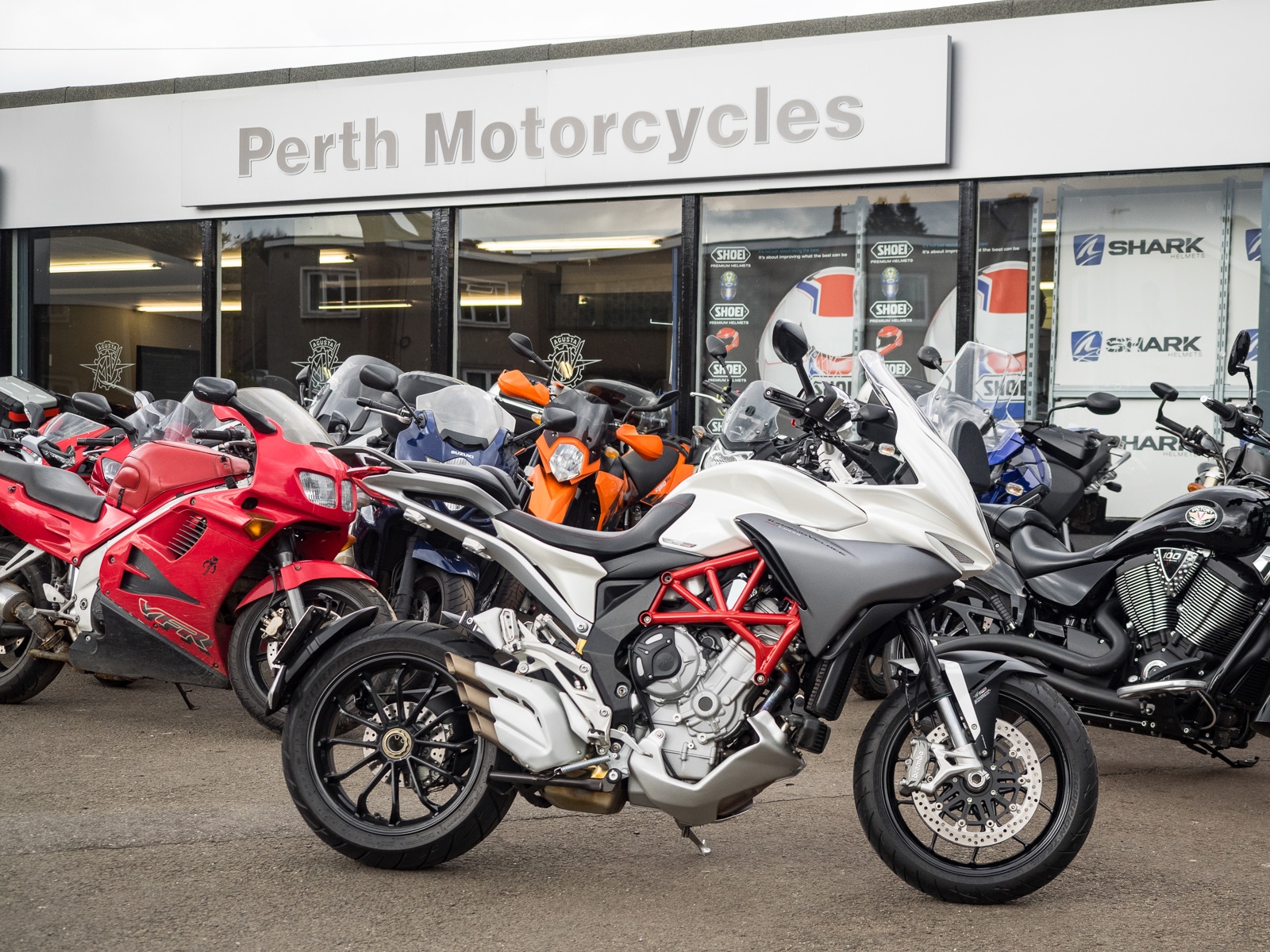
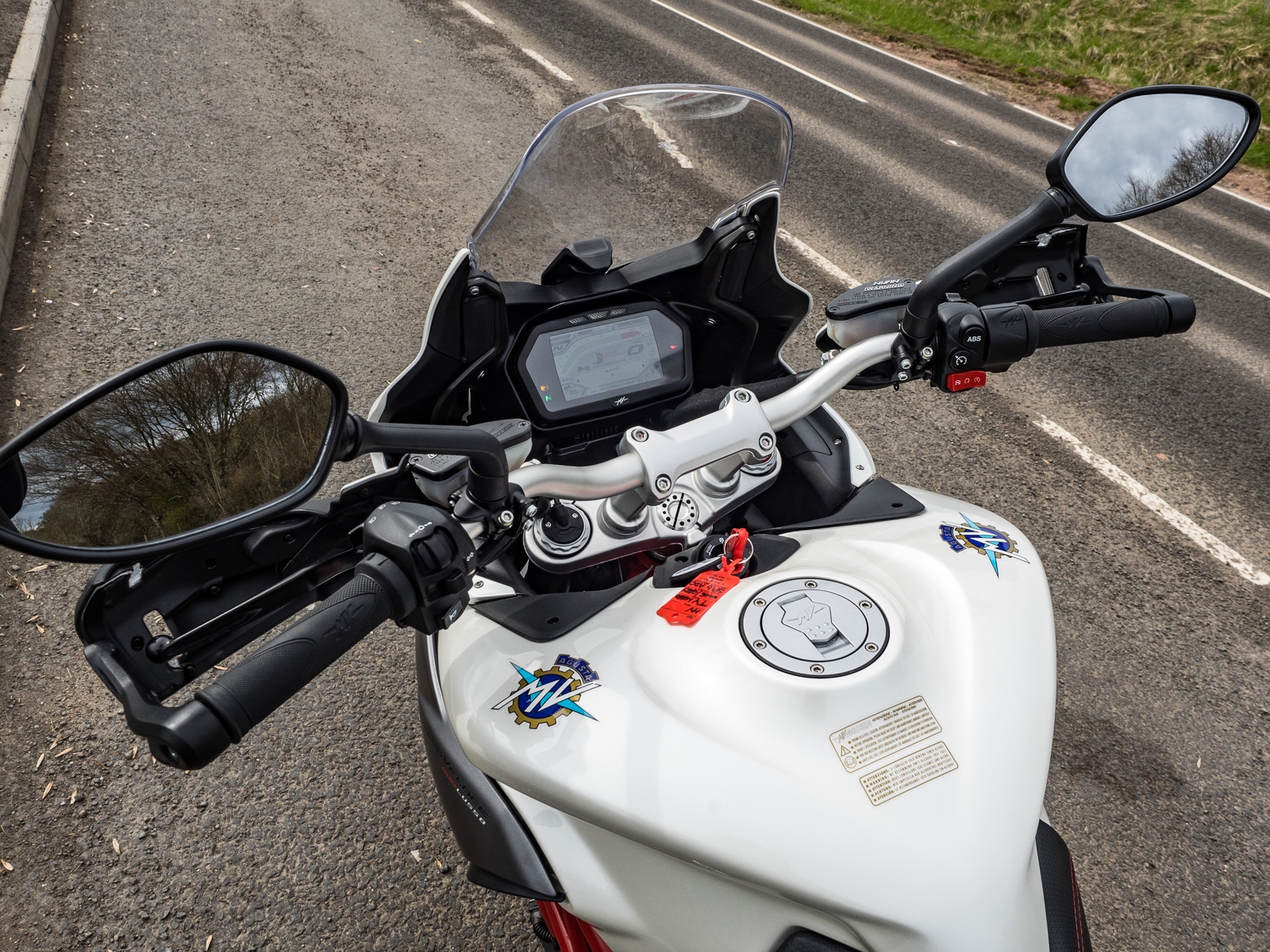
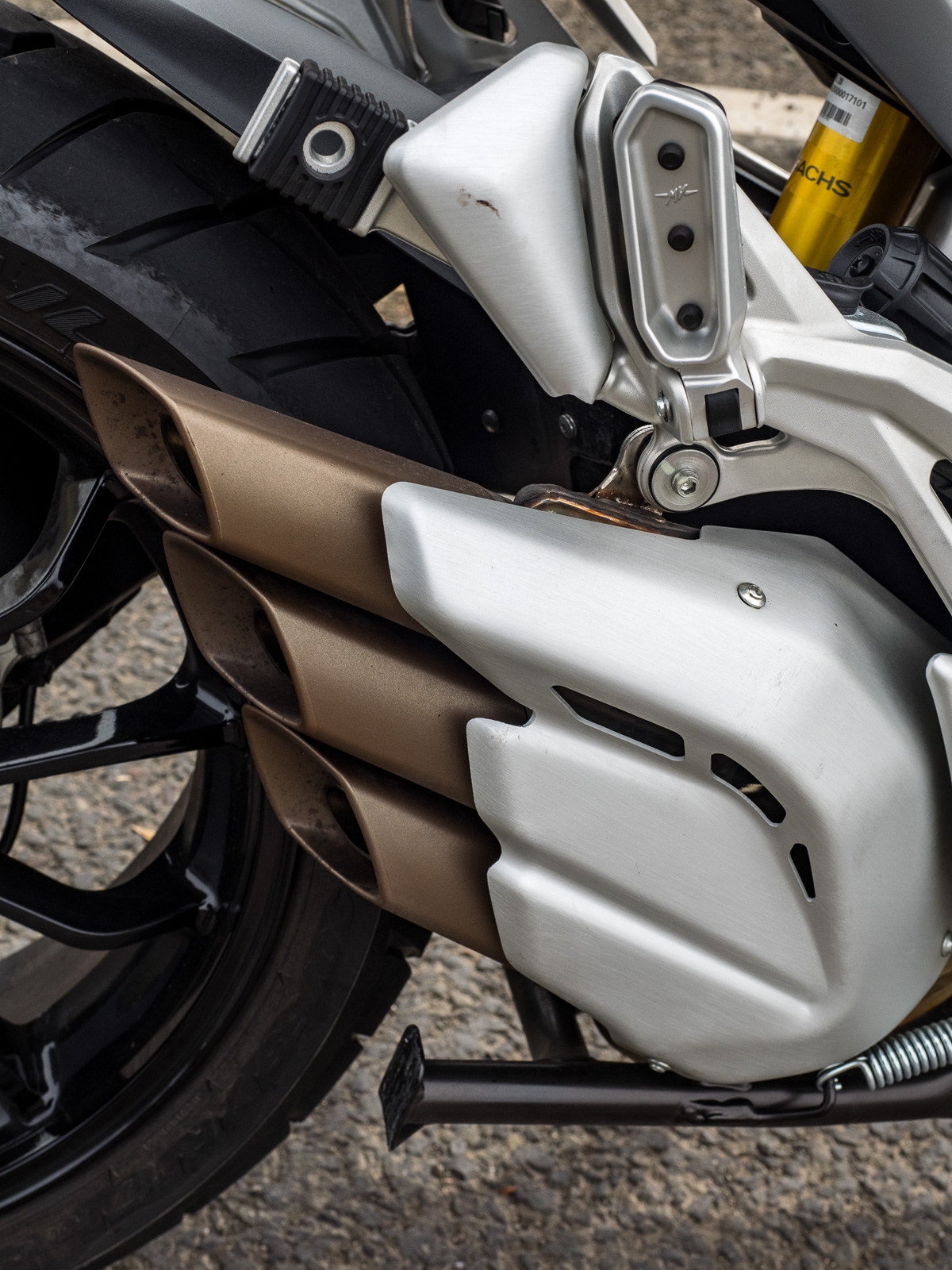
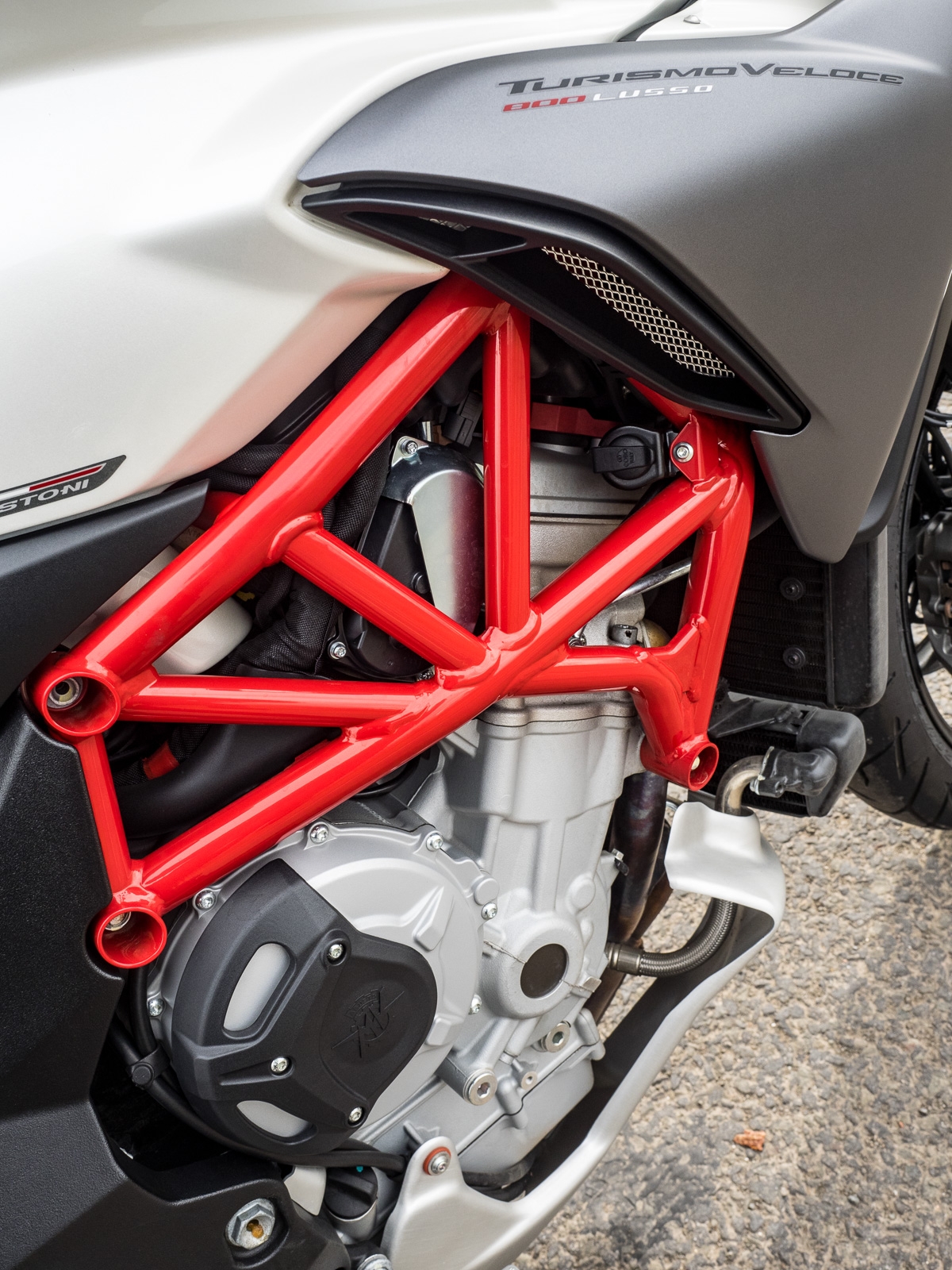
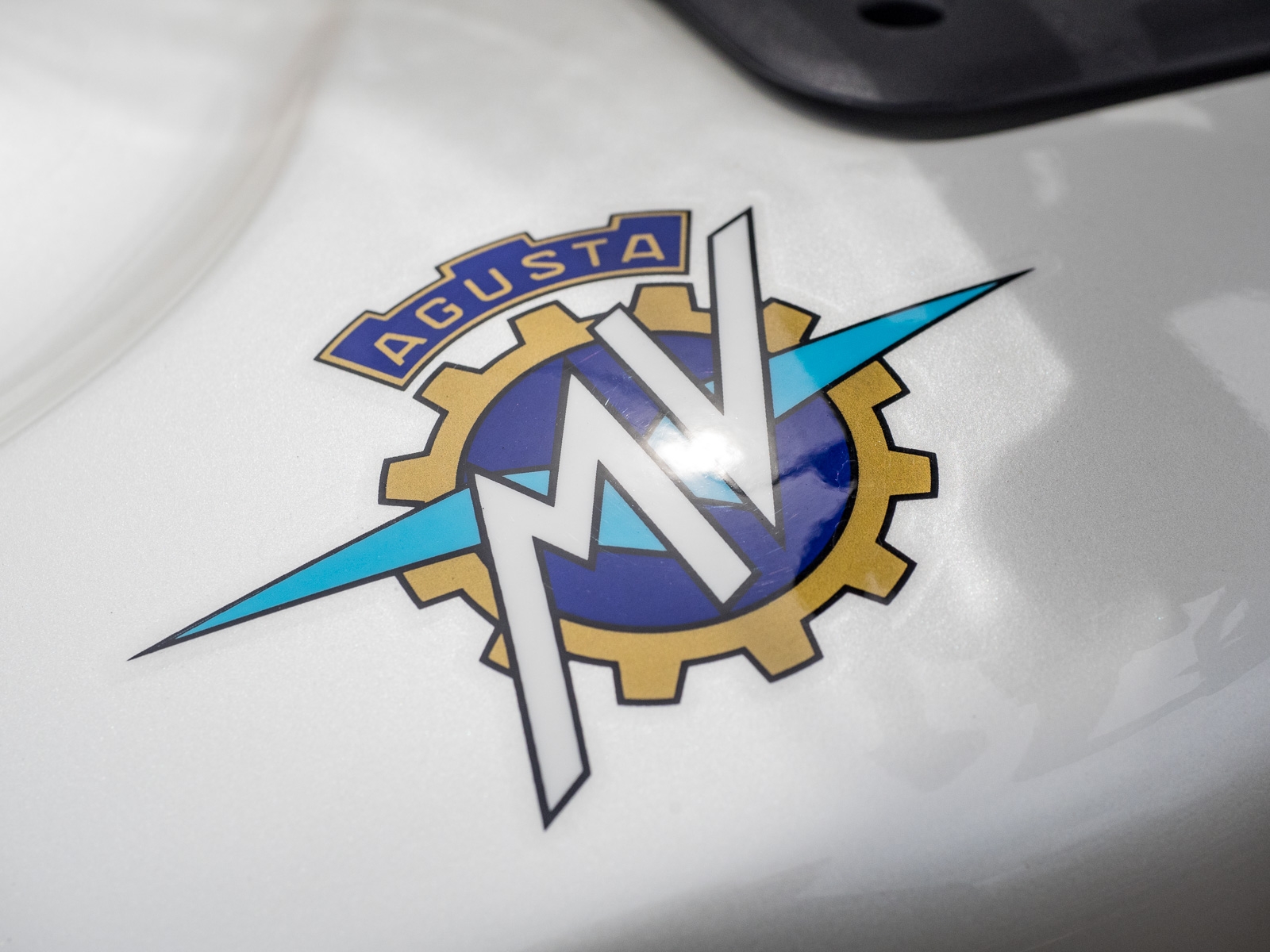
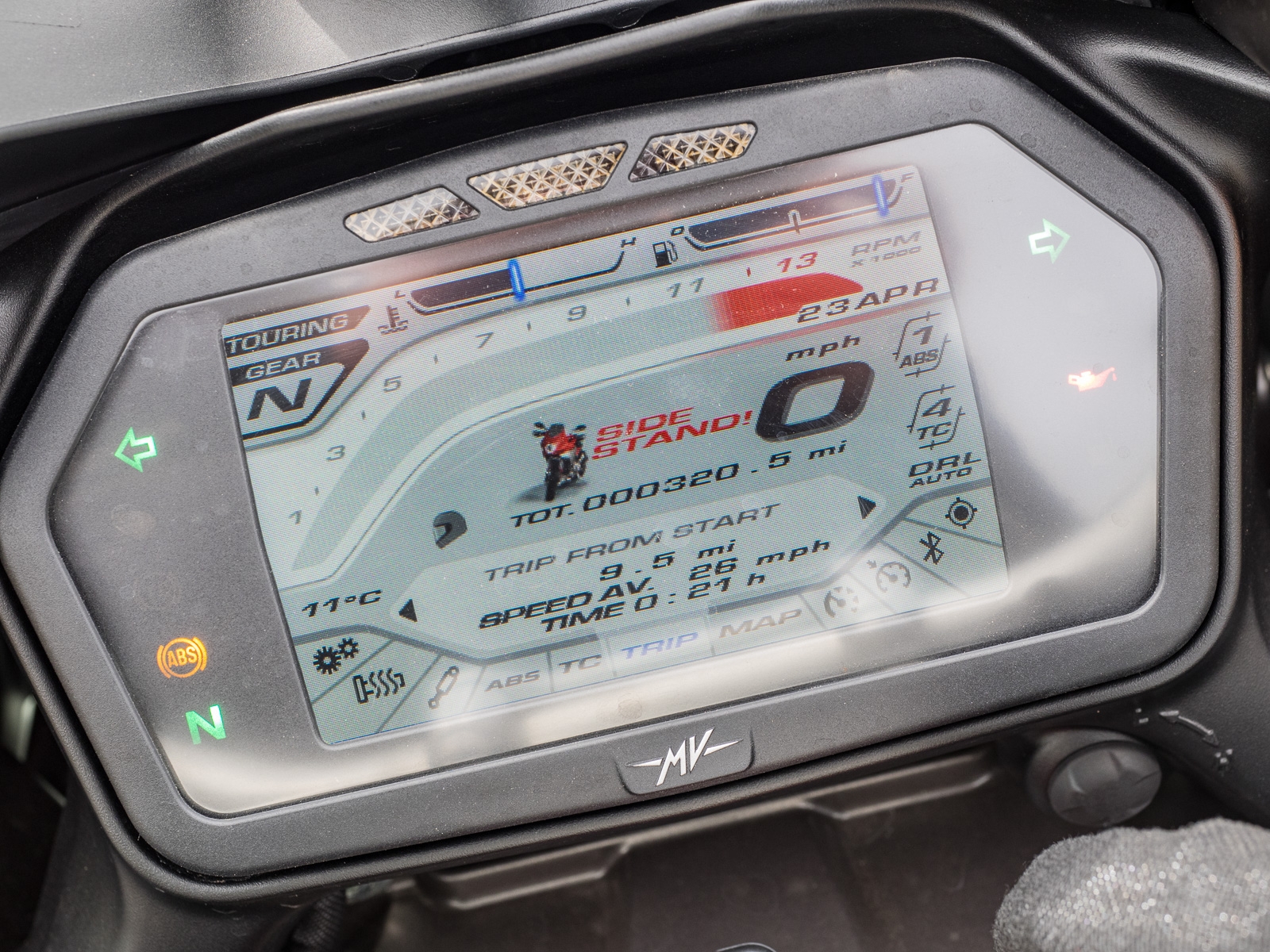
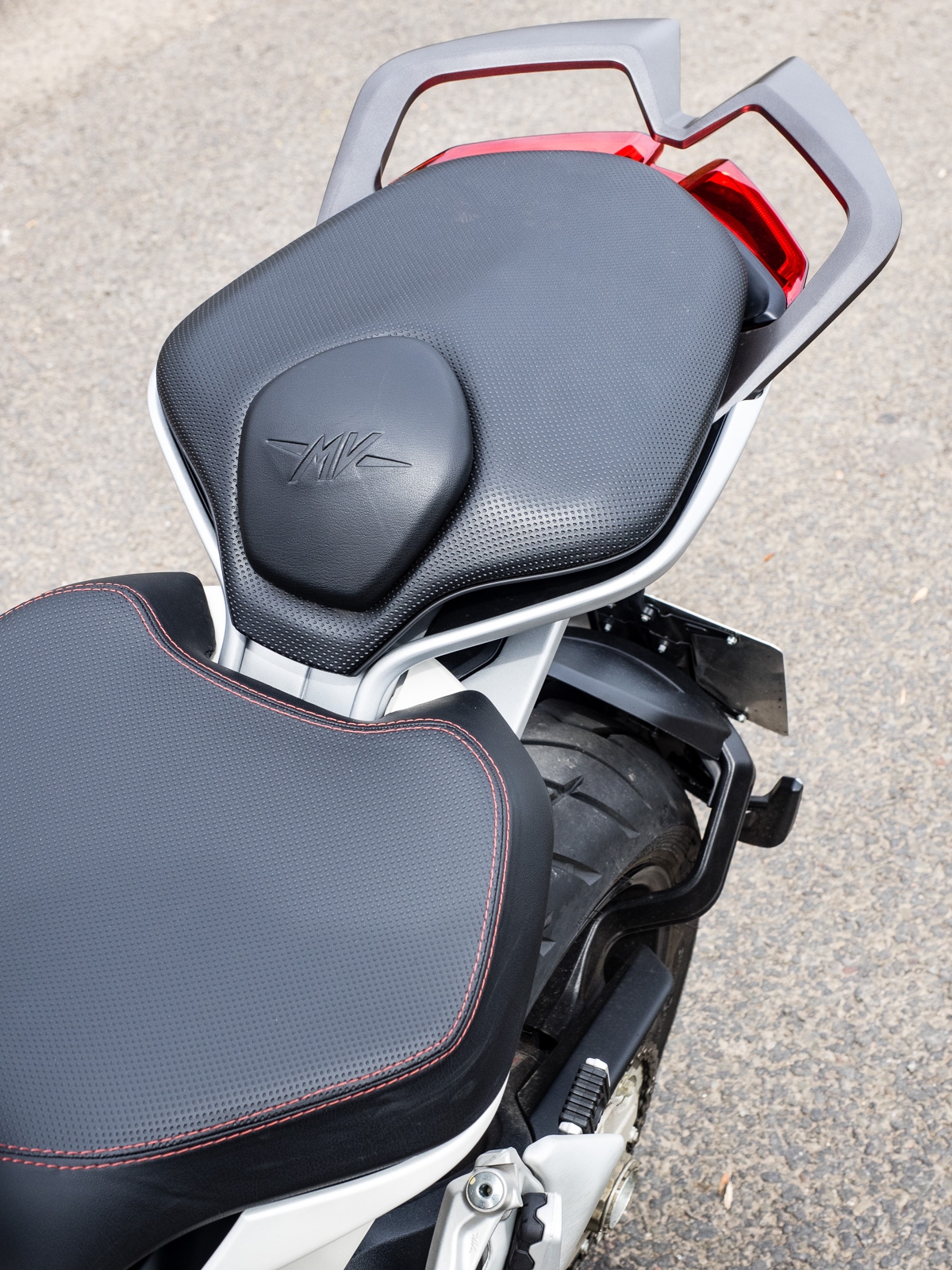
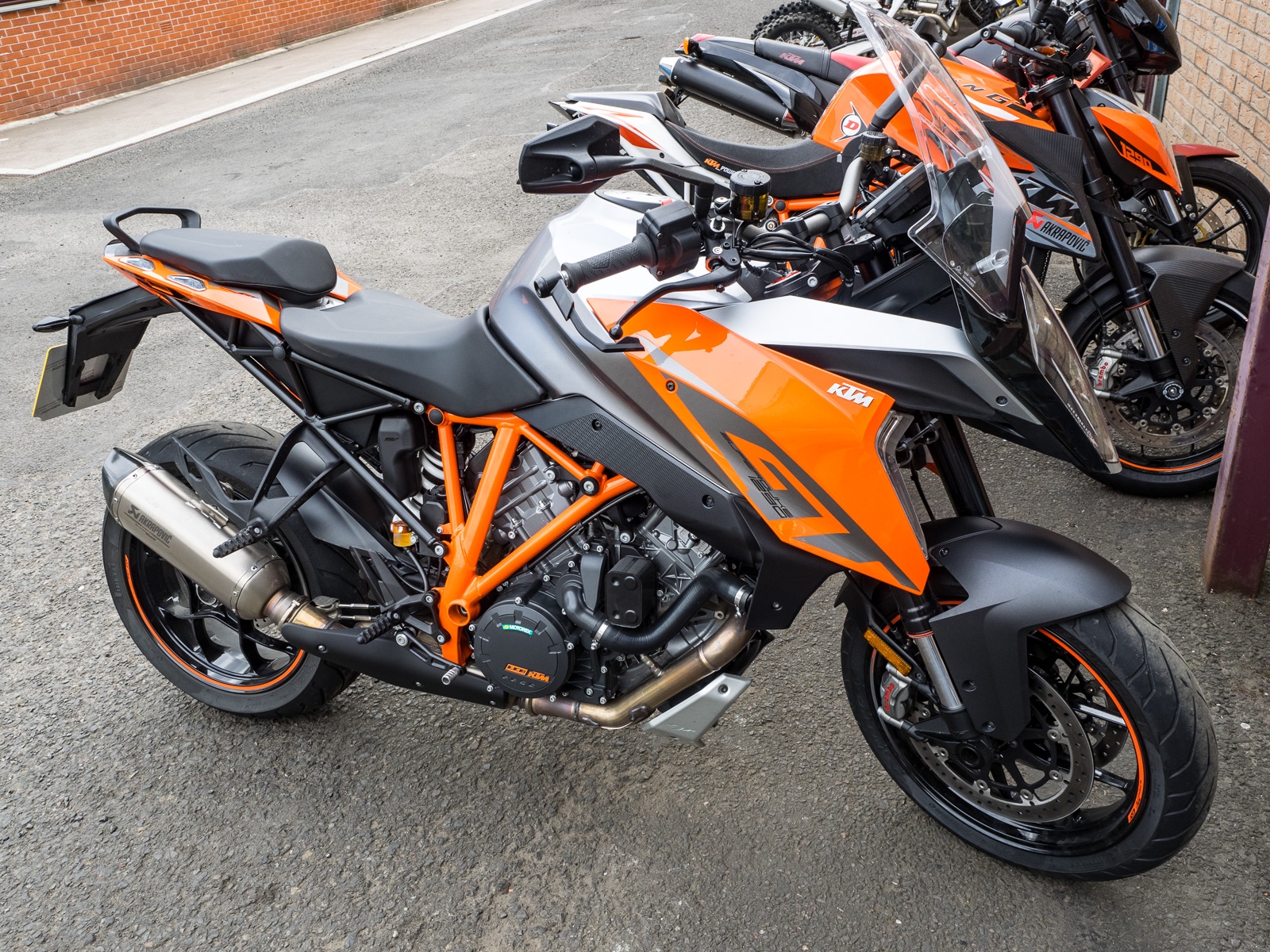
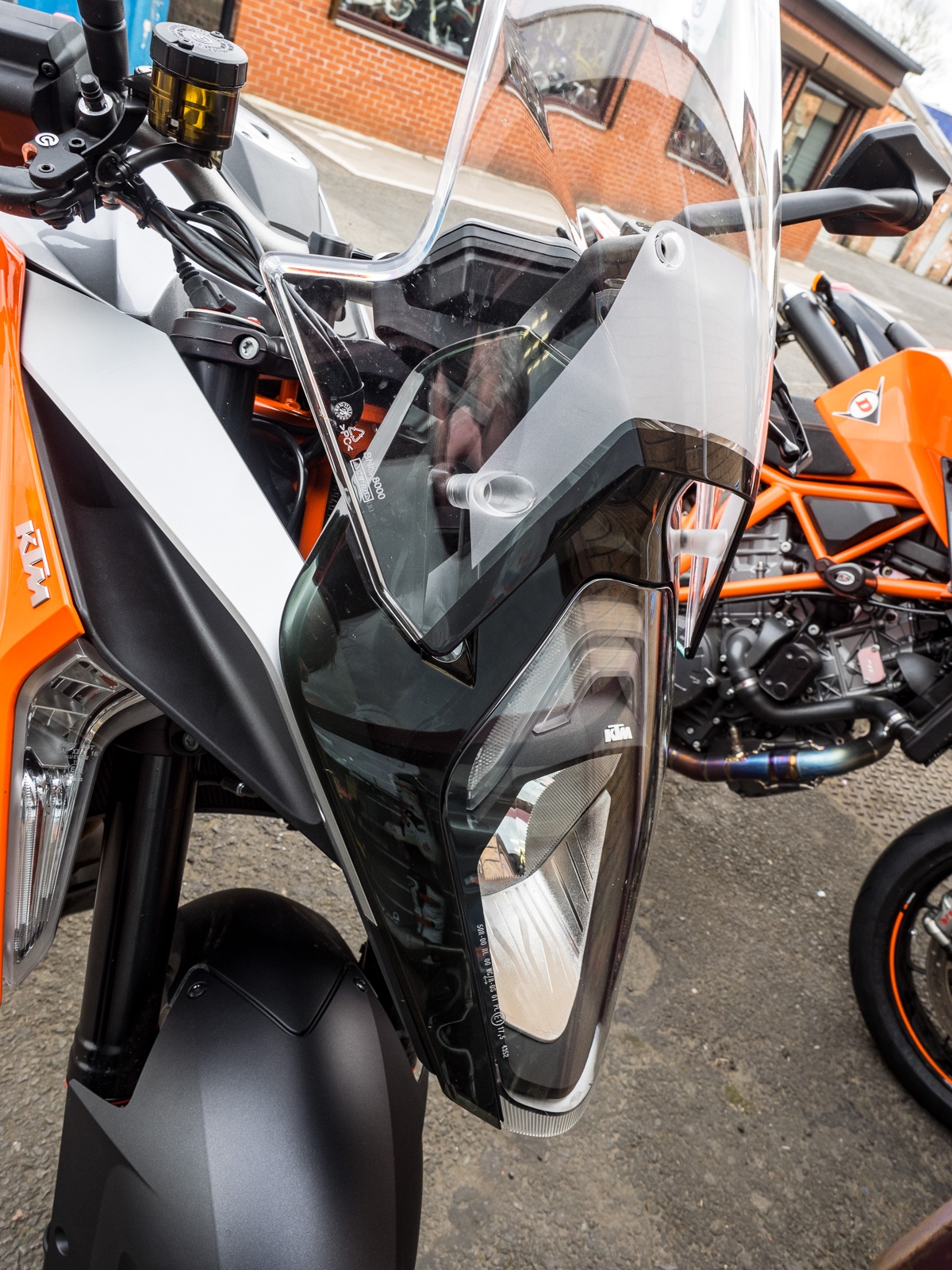
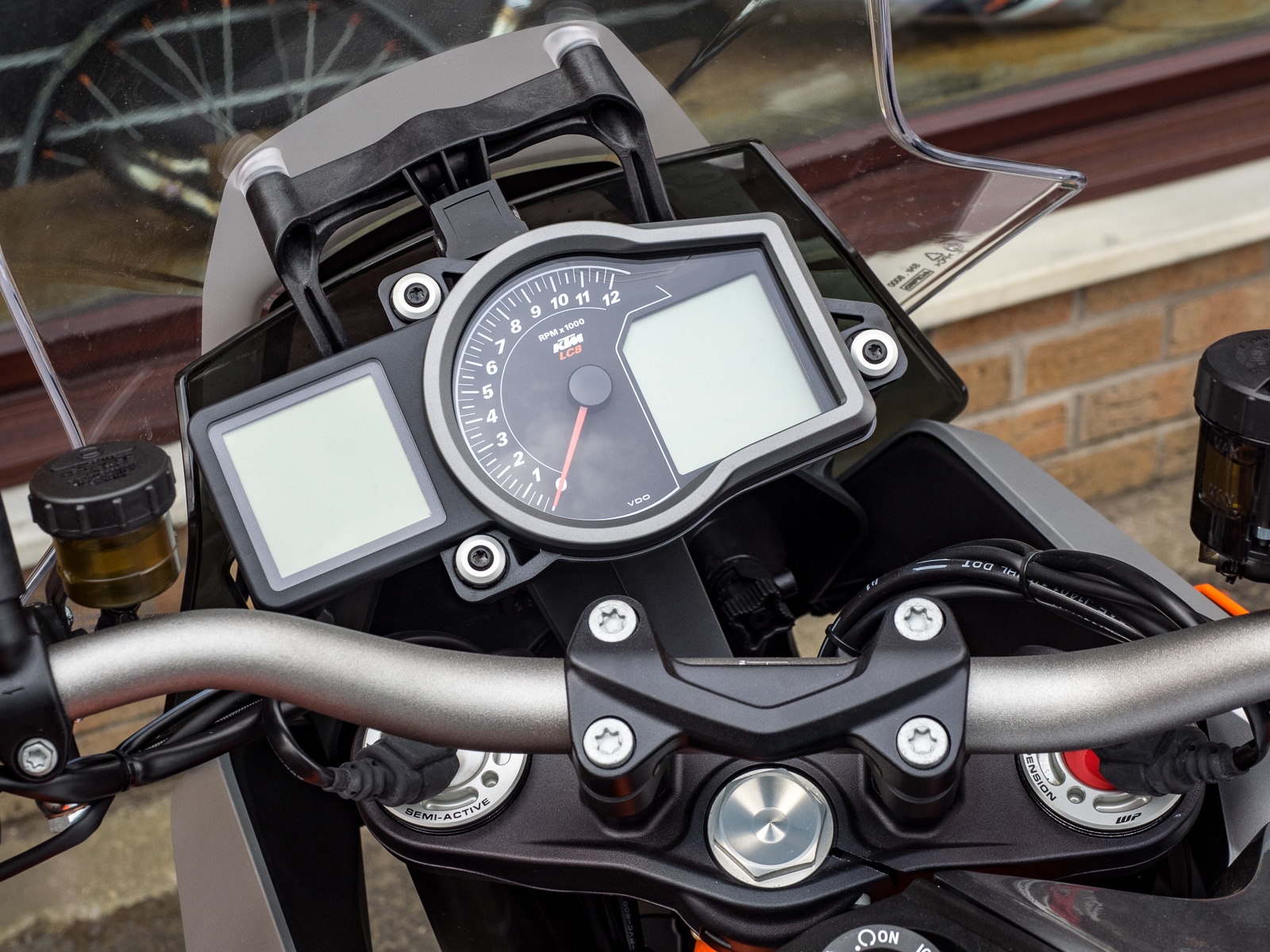
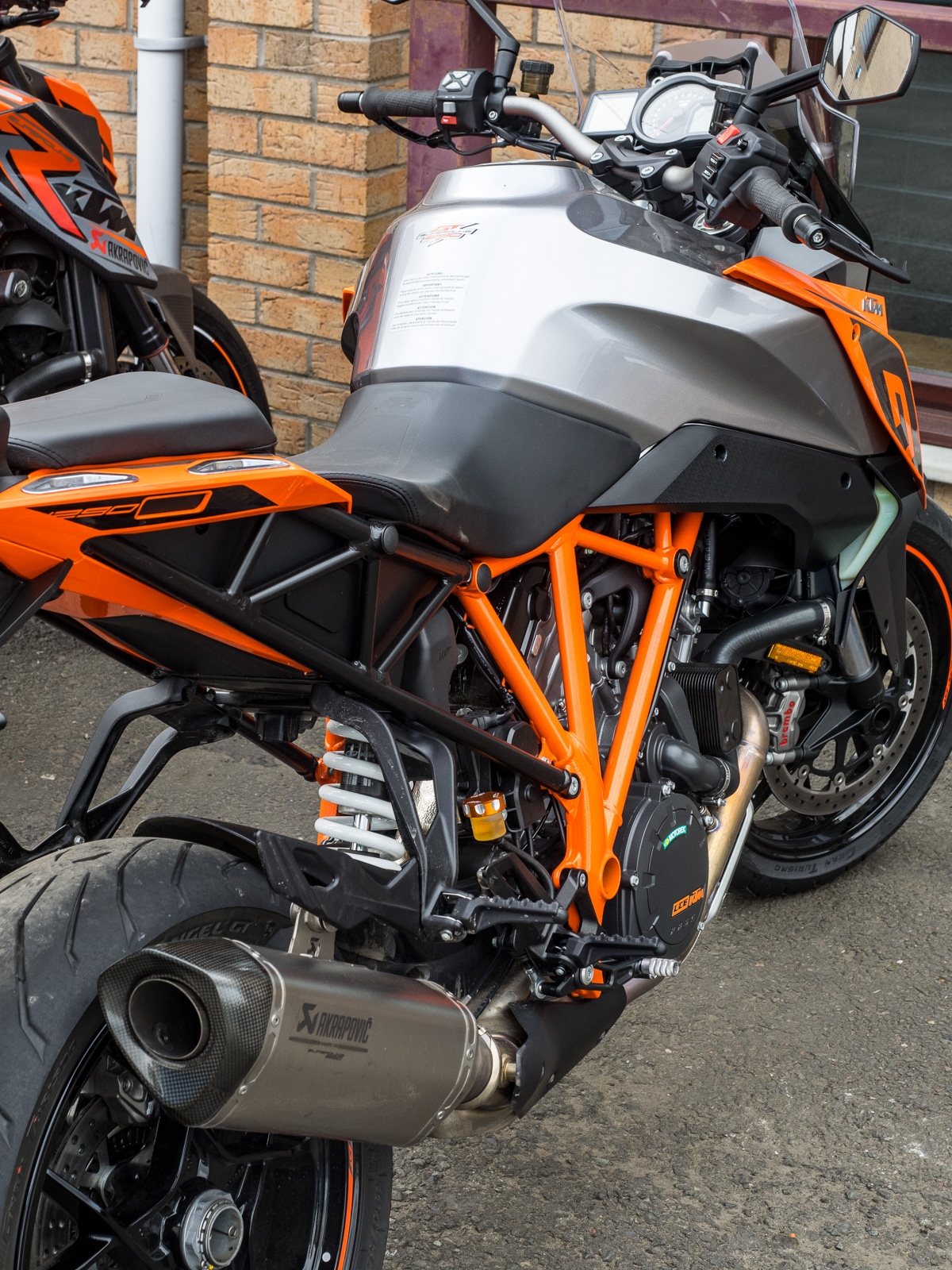
Leave a Reply